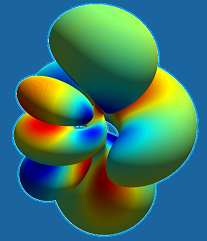The lectures will be followed by research mini-projects scheduled for Mon 16/09 - Wed 18/09. Every participant will choose one particular project during registration. Solutions of the projects will be presented by the participants on Thu 19/09.
Annotation of projects:
Project #1: Quantum criticality in the Lipkin-Meshkov-Glick model
Pavel Stránský
Institute of Particle and Nuclear Physics, Faculty of Mathematics and
Physics, Charles University, Prague, Czech Republic, stransky@ipnp.troja.mff.cuni.cz
This project will focus on the topic of (ES)QPTs presented in the lectures of Pavel Cejnar.
The aim of this project is to numerically implement a general form of
the Hamiltonian of the LMG model and to study ground-state and
excited-state QPTs in various parametrizations of the Hamiltonian. In
particular, the scaling of various (ES)QPT-related quantities with the
size parameter N will be addressed. Optional topics include:
distributions of exceptional points near QPTs, evaluation of the
smooth and oscillatory components of the level density etc.
Project #2: Laser experiments in atomic physics
Miroslav Krůs
Institute of Plasma Physics, Academy of Sciences of the Czech Republic, Za Slovankou 1782/3,
18200 Prague 8, Czech Republic, krus@ipp.cas.cz
Two distinct experimental projects are offered, namely:
High-order harmonic frequencies generation: This experimental project will focus on the generation of high-order harmonic frequencies (HHF) of femtosecond Ti:sapphire laser. HHF are usually generated by linearly polarized ultrashort laser pulses interacting with noble gases. Within this project, fundamental parameters of HHF will be studied as a function of infrared laser mid-wavelength, chirp, pulse duration etc.
Monochromatic optical parametric amplification: Monochromatic laser beams are required for the single transition spectroscopy, ionization or excitation of a particular transition in atoms and molecules. The broadly tuneable monochromatic laser light can be amplified via optical parametric amplification mechanism where one wavelength is chosen from supercontinuum generated by an intense femtosecond laser. This project will study the generation of the supercontinuum and the amplification of its single wavelength as a function of the seed and pump laser parameters.
Project #3: Resonances and Non-Hermitian Singularities in Nature
Nimrod Moiseyev
Schulich Faculty of Chemistry and Department of Physics, Technion - Israel Institute of Technology, Haifa, 32000, Israel, nimrod@technion.ac.il
Numerical study of resonance tunneling in nonhermitian quantum mechanics. Also a study of enhancement of harmonic generation spectra via resonance-bound coupling. More details need to be supplemented by Nimrod.
Project #4: Nonhermitian Scattering Theory
Milan Šindelka
Institute of Plasma Physics, Academy of Sciences of the Czech Republic, Za Slovankou 1782/3,
18200 Prague 8, Czech Republic, sindelka@ipp.cas.cz
The aim of this project will be to investigate numerically the problem of scattering of a quantum particle on a 1D potential. We shall focus on evaluating the transmission probability as a function of the incident particle energy using two approaches:
a) standard hermitian scattering theory;
b) nonhermitian Siegert based scattering theory.
Our first major goal will be to demonstrate that both theoretical frameworks a) and b) provide the same transmission profiles. Our second goal will be to highlight fundamental advantage of the nonhermitian formalism (method b)) for the description of resonance scattering. Namely, we will calculate explicitly the corresponding resonance wavefunctions, and identify their role in forming Lorentzian peaks in the obtained transmission profile. Our third goal might be to proceed further and try to understand the role of anti-bound states in scattering phenomena. (This is an as yet unexplored problem to my knowledge, whose investigation can bring surprises and perhaps even a nice paper as an outcome).
Project #5: Electroweak Interactions in Atomic Spectroscopy
Jaroslav Zamastil
Department of Chemical Physics and Optics, Faculty of Mathematics and Physics, Charles University, Ke Karlovu 3, 121 16 Prague 2, Czech Republic, zamastil@karlov.mff.cuni.cz
1) Estimate the value of the Fermi coupling constant from the neutron lifetime.
2) a) Determine the range of electroweak force from the mass of Z_0 boson.
b) Calculate the PNC-induced mixing between 2S and 2P_{1/2} states in hydrogen and muonium.
c) Compare the relativistic and non-relativistic expressions for PNC.

